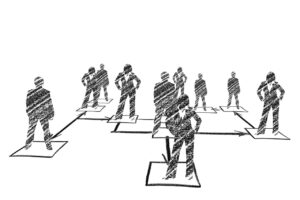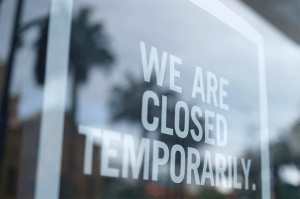Henry Ford once famously said, “Whether you think you can or you think you can’t, you’re right.” But, if you just replace the last word with its antonym, does it really change the statement’s meaning? It’s not much different than the glass half-empty, glass half-full analogy. The point is that in every situation, no matter how challenging, opportunity does present itself. It’s whether you choose to act on it or not. So, let’s take a few moments to break this down and gain some insight that can be very valuable in tough circumstances.
Best Tips For Maintaining A Positive Outlook When Things Go Wrong
We’ve all heard the comparison: entrepreneurship is a “rollercoaster ride” of highs and lows, triumphs and setbacks. While the allure of success drives many to embark on this journey, the reality often includes unexpected hurdles and long moments of doubt. When carefully laid plans go awry and obstacles seem insurmountable, maintaining a positive outlook can be a Herculean task. Yet, optimism is the lifeblood of entrepreneurship, fueling perseverance and innovation in the face of adversity.Staying Optimistic as an Entrepreneur
Let’s stay with the rollercoaster analogy—some days you’re soaring high, and other days, you feel like you’re plunging down. It’s easy to get lost in the negativity that comes with challenges. But how can you keep that sparkle of optimism alive, even when the going gets tough? Below, we’ll explore some strategies to help you maintain a bright outlook, starting with perspective.Embrace the Learning Curve
Every setback can feel like a punch to the gut, but what if we saw them as opportunities for growth? When things don’t go as planned, instead of sulking, ask yourself: “What can I learn from this?” Entrepreneurs are all about problem-solving. Shift your focus from the problem to the lesson. Treat it like opening up a roadblock on a thoroughfare. The more you learn, the stronger you become.Surround Yourself with Positivity
Ever heard the saying, “You are who you hang out with”? It rings true for entrepreneurs, too. Surround yourself with people who lift you up, not those who bring you down. Friends, mentors, or even fellow business owners can spark a fresh wave of optimism. When you share your struggles with like-minded folks, it provides you with a cheering squad. Positive vibes are contagious—let them fuel your spirit.Set Small, Achievable Goals
Large goals look a lot like mountains on the horizon. They can be overwhelming, especially when obstacles appear. Why not break that mountain down into smaller, manageable hills? This way, every small step you take feels like a victory. Celebrate those wins, no matter how tiny they seem. Each small success can boost your confidence and help you stay optimistic about reaching your ultimate goal.Cultivate Gratitude Daily
It’s easy to dwell on what’s going wrong, but spotting the good in your day can flip the script. Take a moment to jot down three things you’re grateful for every day. It could be a helpful customer, a supportive friend, or just a sunny day. This simple act can shift your mindset from scarcity to abundance. When you focus on gratitude, optimism naturally follows.Visualize Your Success
Picture this: you’re standing on a stage, your business thriving, customers loving your product. How does that feel? Visualization is a powerful tool. Spend a few minutes each day imagining your success. This practice ignites motivation and fuels optimism. When you can see the finish line, it’s easier to stay positive when hurdles appear along the way.Find Inspiration Everywhere
Life often has its fair share of ups and downs. Seek stories of other entrepreneurs who have faced adversity and come out shining. These tales can act as fuel for your fire. When you hear how someone turned their setbacks into comebacks, it’s the same as a light bulb flicking on in your brain. It reminds you that challenges don’t define you—they’re merely stepping stones on your path to success.Practice Self-Care Regularly
Amid the hustle and bustle of entrepreneurship, it’s easy to overlook your well-being. Neglecting self-care can drain your energy and optimism. Make time for activities that recharge your spirit—be it exercise, meditation, or reading a good book. Taking care of your body and mind equips you to handle challenges with a clearer perspective.Want to Accomplish More?
Do you want your company to grow faster and earn more while you spend more time with your family doing all the things you started your business to do?We can make that dream a reality. Give us 30 minutes and we will show you how to get your life back. Skeptical? Good! Put us to the test.
You can call us for your free appointment at 480-636-1720, or, if you prefer, Waters Business Consulting Group to learn more about us and the services we offer.




